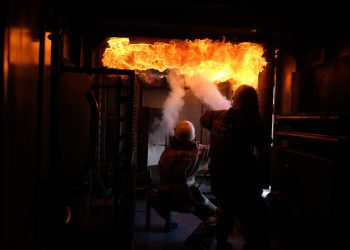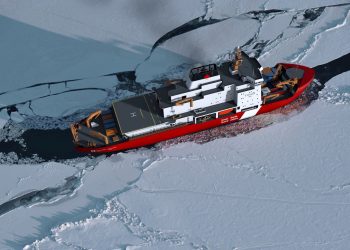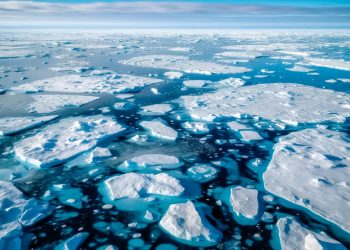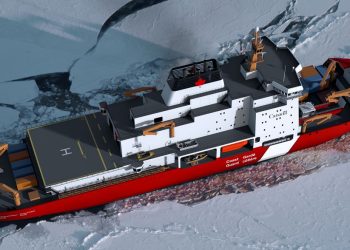On 16 June 2016 a launching ceremony of a lead nuclear icebreaker Arktika, pr. 22220, being constructed to the class of the Russian Maritime Register of Shipping (the Register, RS), took place at Baltic Shipyard.
Valentina Matvienko, the Chairman of the RF Federal Assembly of the Federation Council, Vladimir Bulavin, the RF Presidential Plenipotentiary Envoy to the Northwestern District, Sergei Kirienko, Chief Executive Officer of ROSATOM national nuclear corporation, Alexei Rakhmanov, President of the United Shipbuilding Corporation (USC), Artur Chelengarov, special representative of the RF President for the international cooperation in the Arctic and the Antarctic and other official persons took part in the festive event. Konstantin Palnikov, RS Director General, attended the ceremony on behalf of the Register.
The lead nuclear icebreaker pr. 22220 is constructed under the technical supervision of the Russian Maritime Register of Shipping at Baltic Shipyard-Shipbuilding by order of ROSATOM national nuclear corporation (the keel of which was laid on 5 November, 2013) and will be the largest and most powerful nuclear icebreaker in the world. RS class notation: КМ✪ Icebreaker9 [2] AUT2-ICS EPP .
Ship’s main particulars:
- power – 60 МВт (shaft);
- speed – 22 knots (at clean water);
- length – 173.3 m (160 m as per CWL);
- breadth – 34 m (33 m as per CWL);
- depth – 15.2 m;
- draught – 10.5 m/8.65 m;
- maximum icebreaking capability – 2.8 m;
- full displacement – 33 540 t;
- specified lifetime – 40 years.
The icebreaker will be fitted with double-reactor electrical power installation with the main steam source from the reactor plant of a new generation RITM-200 with the power of 175 MW being specially designed for this ship.
Technical design of the icebreaker was developed by Iceberg Central Design Bureau in 2009. The double-draught design makes possible to use the ship both in the Arctic waters and in estuaries of the Polar rivers. The icebreaker will be operated in the Western area of the Arctic: in the Barents Sea, Pechora Sea and Kara Sea, as well as in shallow water of the Yenisei estuary and in the area of the Gulf of Ob.
Source & Image Credi: RS




























































